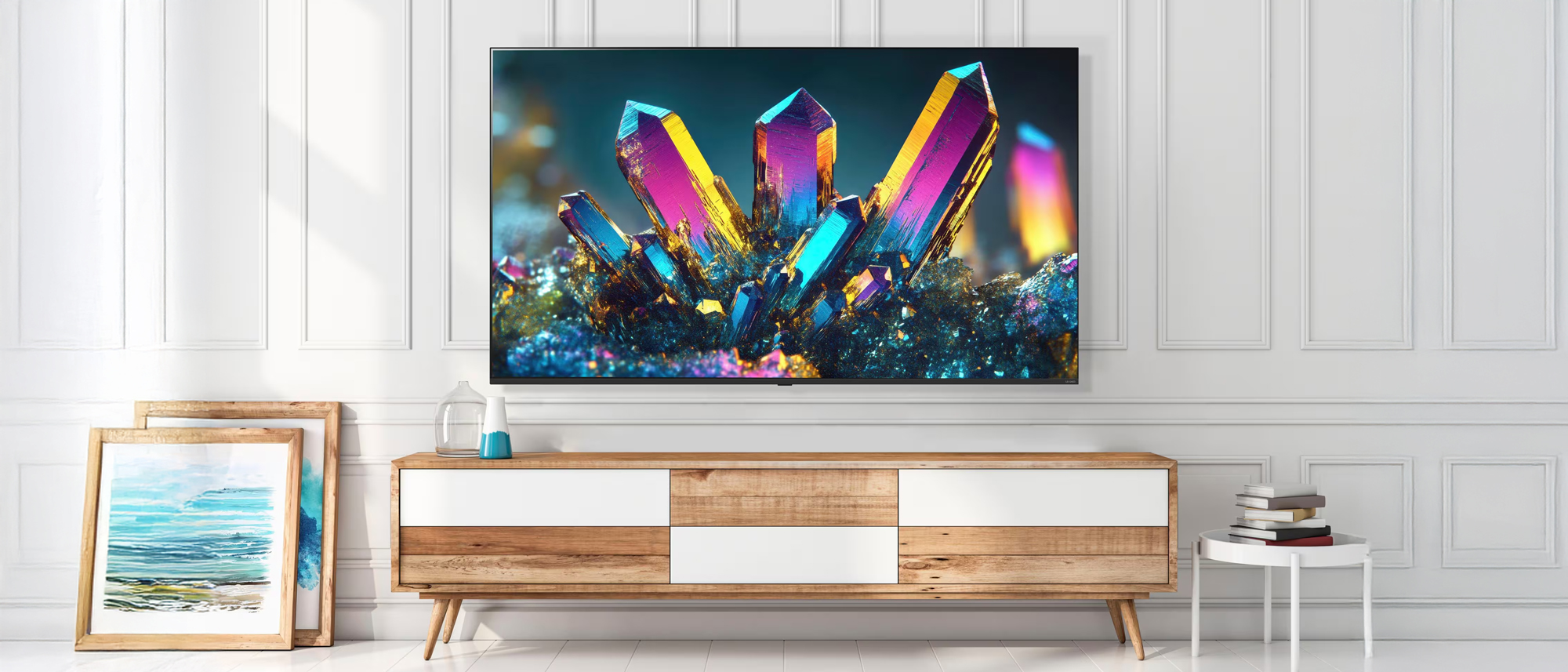Tom's Guide Verdict
The LG QNED92 is a solid gaming LED-LCD TV, offering four HDMI 2.1 ports with incredible motion processing and glare mitigation. Despite this, it doesn’t hold up well against the competition in terms of brightness or sound quality.
Pros
- +
Great color volume
- +
Solid motion processing
- +
Surprising glare mitigation
- +
Tons of gaming features
Cons
- -
No ATSC 3.0 tuner
- -
So-so brightness
- -
Poor sound system
- -
Finicky input selection
Why you can trust Tom's Guide
The LG QNED92 swoops in to replace last year’s QNED90T, bringing with it a host of major enhancements to set it apart from the ever-growing crowd of LED-LCD TVs with Mini-LED backlighting. While it might at first seem like a great new display, the QNED92 doesn’t quite offer the same value — or performance — as the similarly priced LG C5 OLED.
On the positive side, the QNED92 does have incredible features built into webOS, plus fantastic motion processing. Color accuracy is also very good compared to the best TVs in its class. And even though this set doesn’t have an anti-glare coating, it proved versatile against reflections, which is surprising for a Mini-LED TV.
In spite of those highlights, though, the QNED92 doesn’t quite surpass the Hisense U8QG. Compared to the U8QG, the QNED92 not only generates low luminance, but also is equipped with slightly worse audio. If it didn’t cost $1,699, the QNED92 would stand a better chance, but for now I’d recommend the Hisense U8QG — or the TCL QM8K — over the QNED92.
LG QNED92 Mini-LED TV review: Price and release date
The LG QNED92 Mini-LED TV (also known as the QNED93 in other regions) launched in April 2025 at the top of LG’s QNED range. It’s available in four main sizes, including 55-inch, 65-inch, 75-inch, and 85-inch, but the 55-inch model is only available outside of the US.
As with most Mini-LED TVs, different sizes means differing numbers of dimming zones. Given that we tested on a 75-inch model, we might see enhanced performance in blooming mitigation and contrast support against its lower sizes. That being said, specs and features will remain largely the same across configurations.
- LG 65QNED92 (65-inch): $1,799 | Sale $1,699
- LG 75QNED92 (75-inch): $2,299 | Sale $2,199
- LG 85QNED92 (85-inch): $3,499 | Sale: $3,299
These prices put the LG QNED92 into contention with other major flagship Mini-LED TVs of the year, including the TCL QM8K and Hisense U8QG (before its massive sales slashing). Still, it does prove cheaper than some alternatives with more premium pricing, like the Samsung QN90F and Sony Bravia 9.
LG QNED92 Mini-LED TV review: Design
When it comes to its outer shell, the LG QNED92 is by no means slim. Like other Mini-LED models (looking at you Hisense U8QG), it’s a bit bulky and hefty. The 75-inch model we tested has a width of about 65 inches and weighs 56 lbs, which means you’ll definitely want an extra pair of hands to get this set up properly.
Get instant access to breaking news, the hottest reviews, great deals and helpful tips.
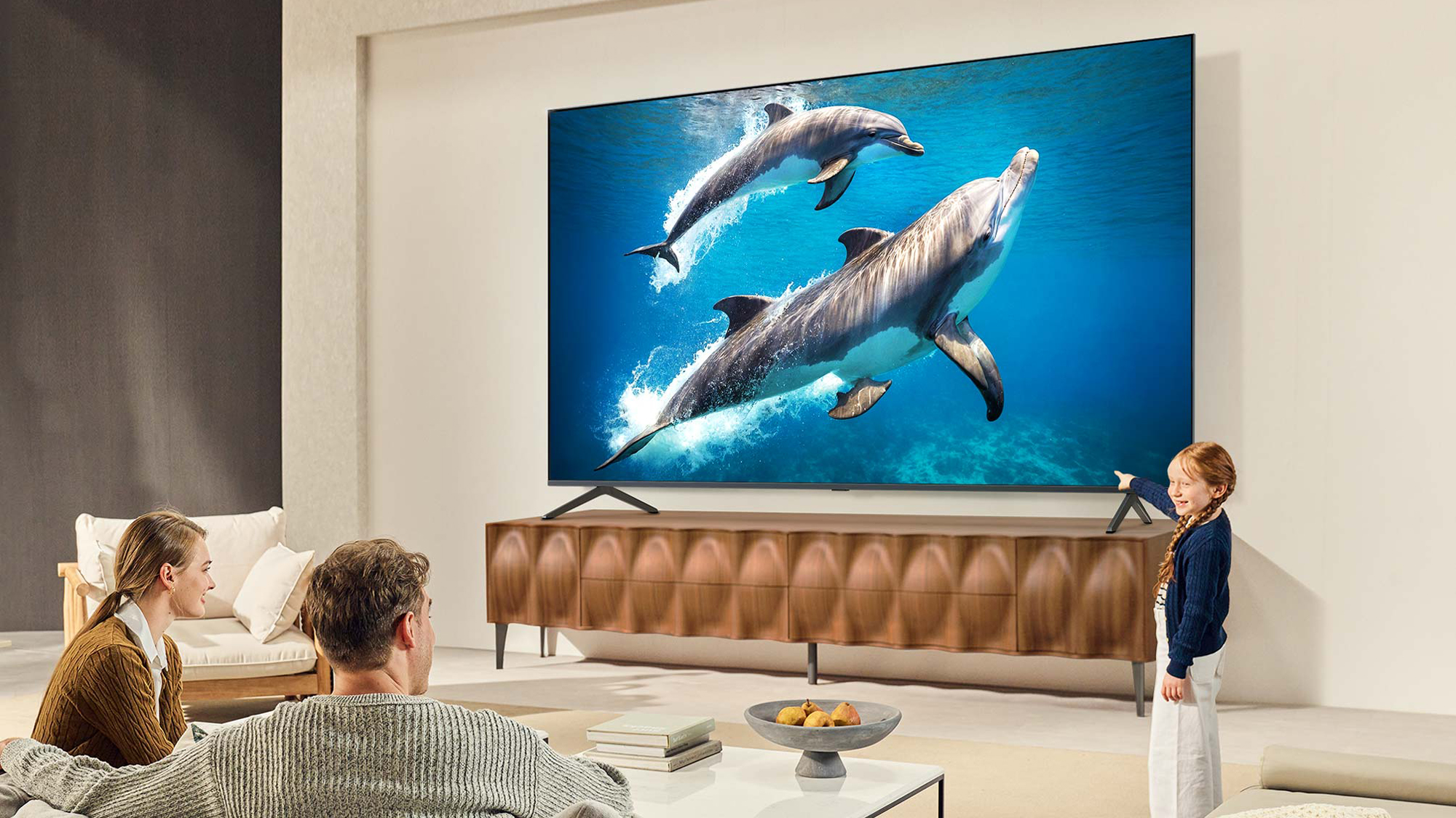
Bezels can be pretty noticeable too, but they don’t detract from the experience. I’ve reached out to ask if LG added an anti-glare coating to the QNED92, but was told it does not feature one. Still, it provides incredible protection against reflections, something the Hisense U8QG suffered from, despite having an anti-glare coating.
It’s kitted with pedestal-style feet that are pretty easy to slot into the base, but they do require a screw driver. These feet are sturdy enough, but are a bit wide, measuring just over 15 inches. This means you'll need a particularly wide surface for this TV, as it requires the full width of its triangular sizing to sit properly.
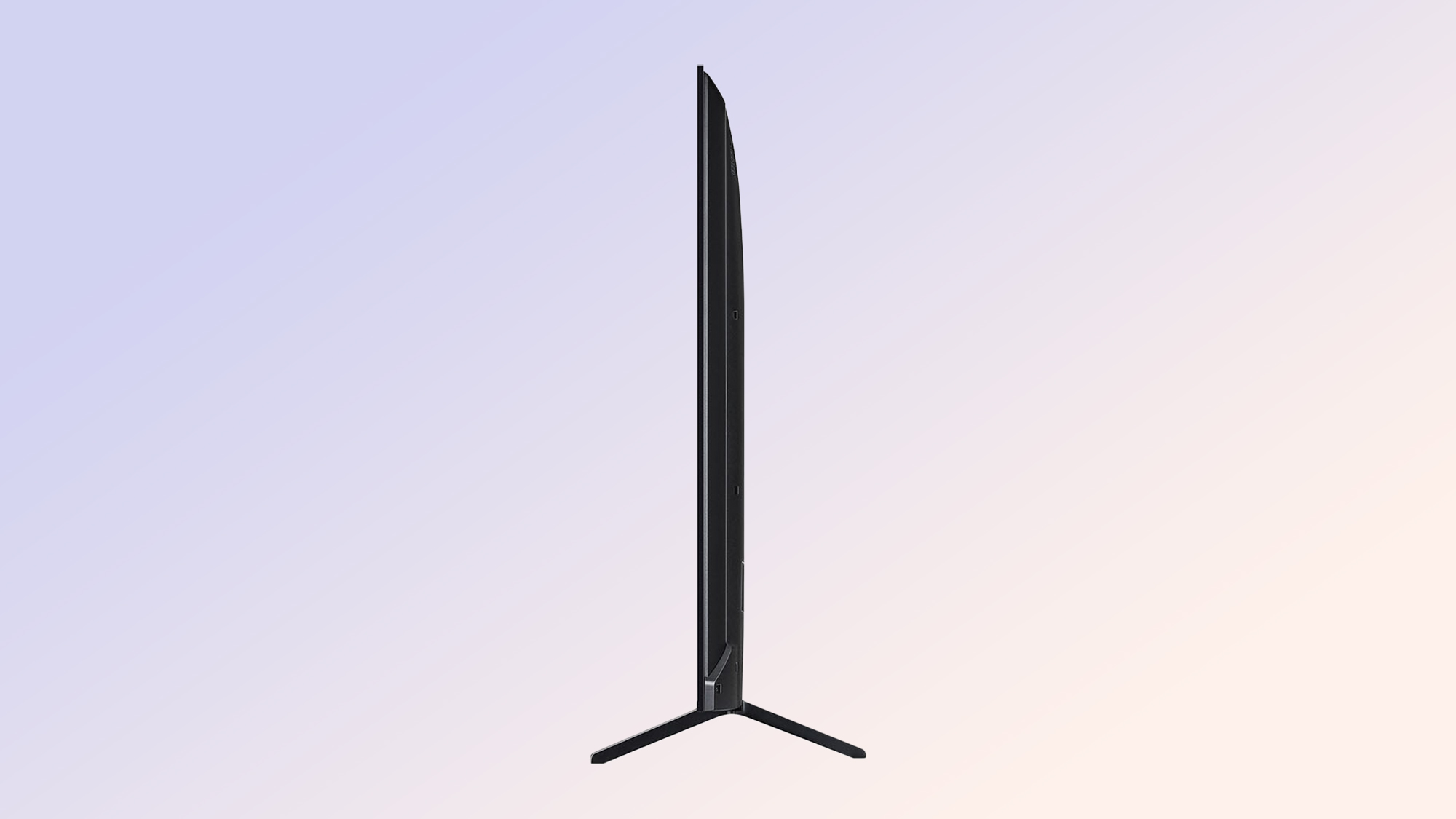
You can always forego the stand in favor of a wall mount instead: The QNED92 uses a 400x300 VESA mounting interface on its 65-inch and 75-inch models, while the 85-inch version uses a 600x400 mounting solution.
LG QNED92 Mini-LED TV review: Ports
The QNED92 is equipped with tons of connectivity, including a range of four HDMI 2.1 ports, one of which is eARC compliant. You’ll also find two USB 2.0 ports, an Ethernet port, SPDF optical digital audio output, RF input for an antenna, and an RS-232C input jack.
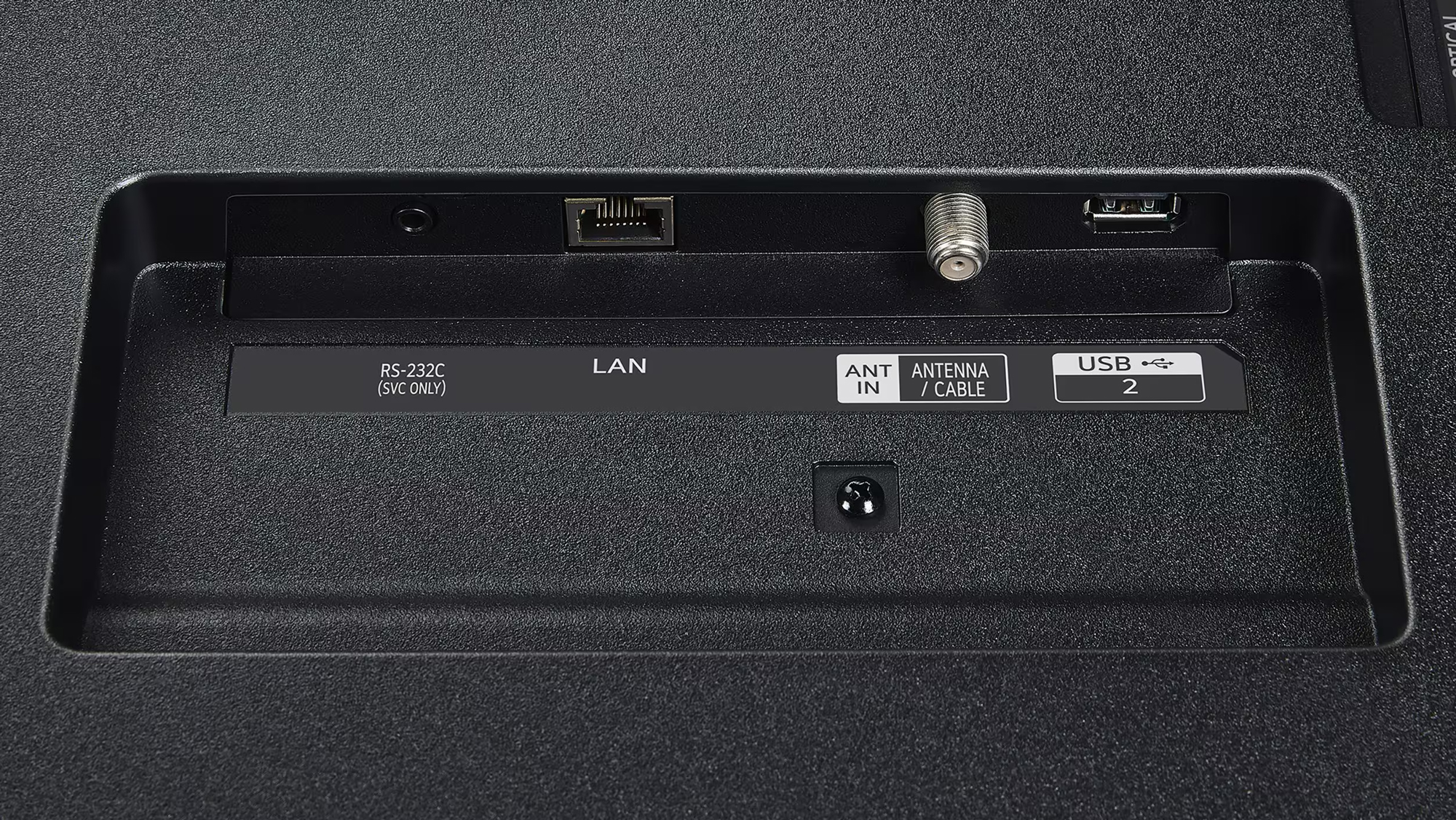
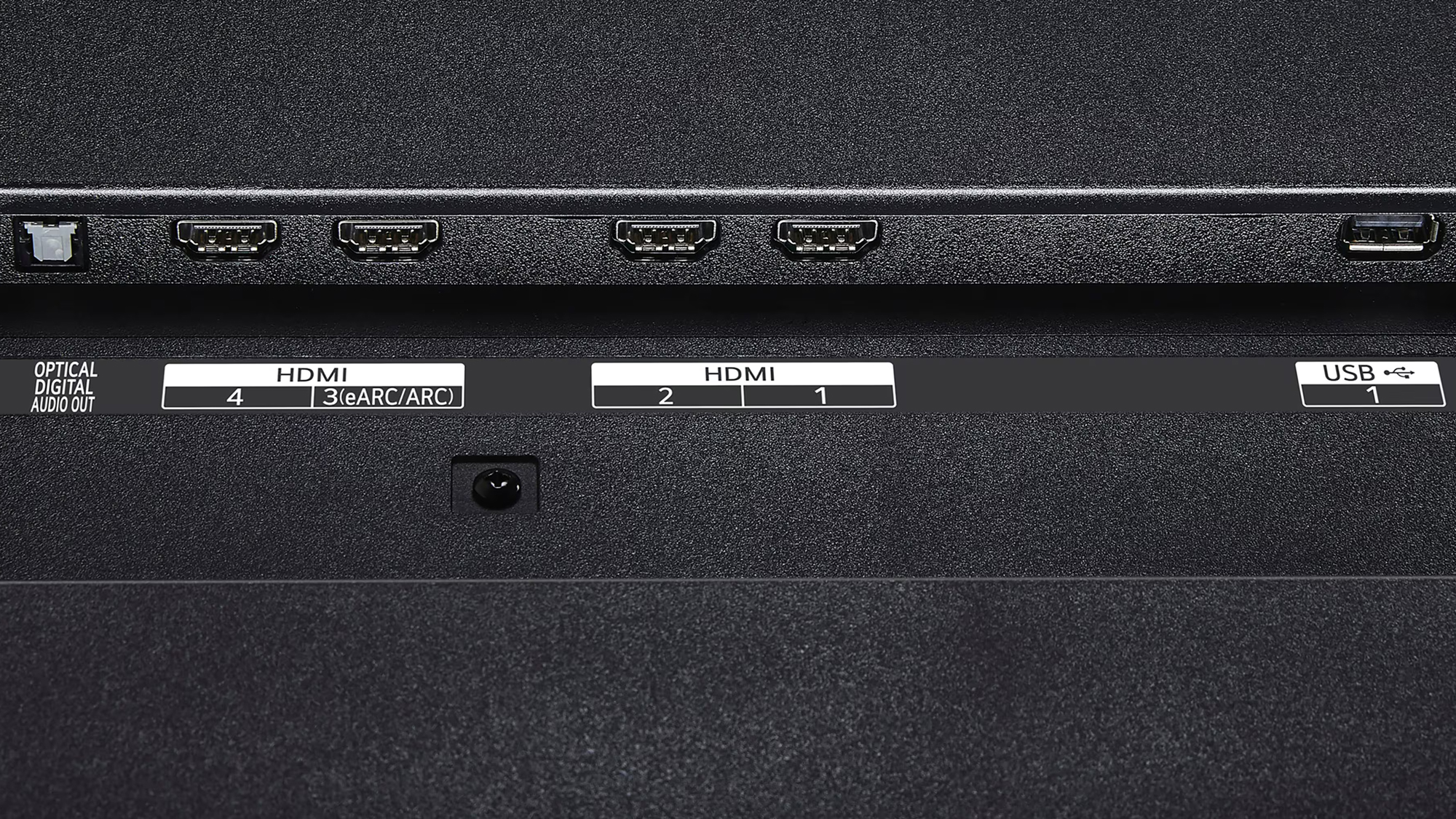
Unfortunately, LG still hasn’t brought back the ATSC 3.0 standard for NetGenTV, so you’re stuck with an ATSC 1.0 tuner on the QNED92. In terms of wireless-supported features, you’ll also find that it’s Bluetooth 5.3-capable and also equipped with Wi-Fi 6E.
LG QNED92 Mini-LED TV review: Performance
I put the QNED92 to task with a variety of different movies and shows that could test its color, HDR performance, and luminance. These include “Interstellar,” “The Batman,” “Hereditary,” as well as more colorful experiences, like “The Super Mario Bros. Movie,” and “Mob Psycho.”
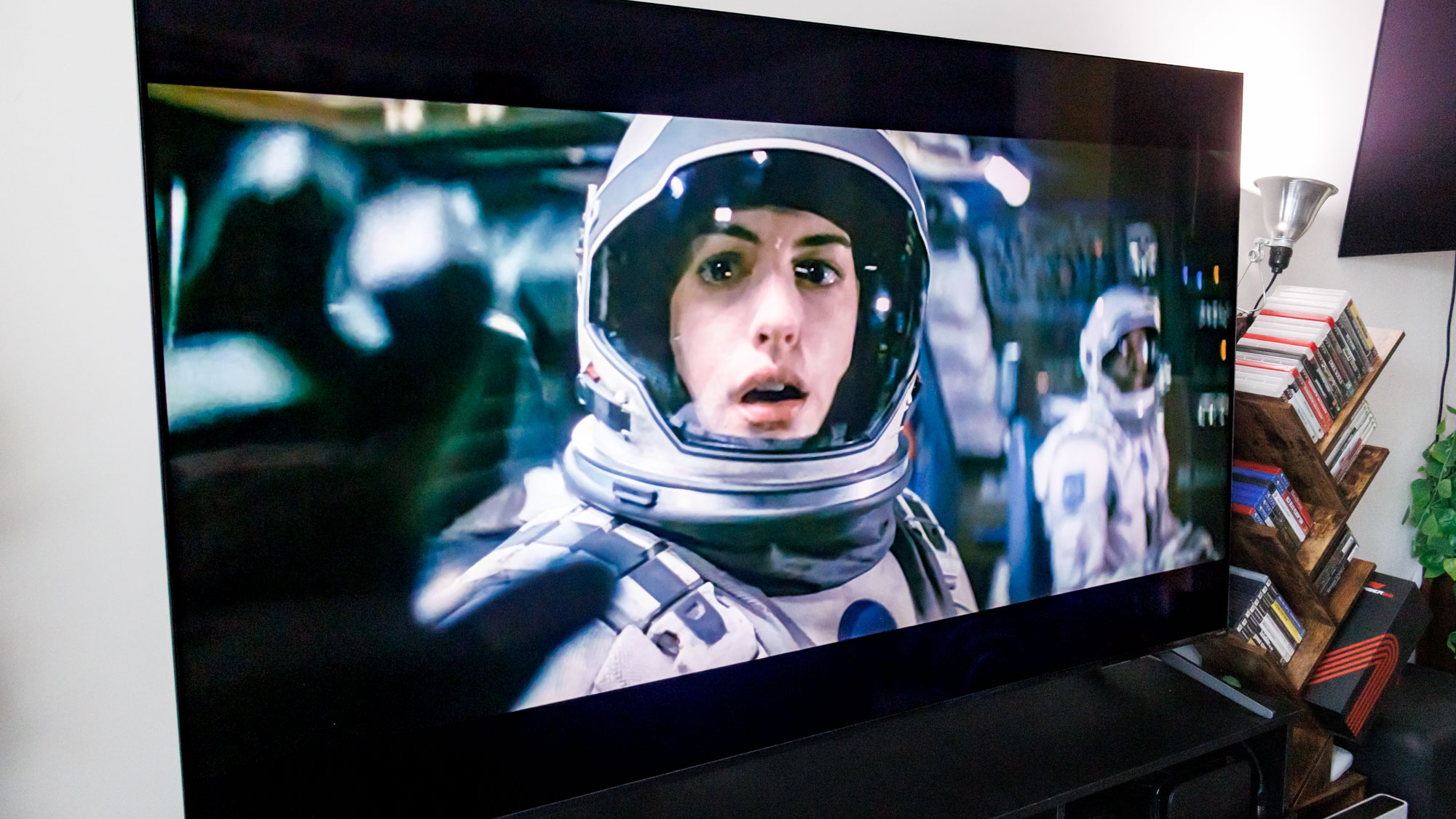
Although not an OLED TV, the LG QNED92 handles these darker movies quite well thanks to a technology called Precision Dimming Pro. Mini-LED TVs and LED-LCDs in general aren’t always the best when it comes to contrast control, but the QNED92 stands out in this regard. It’s best exemplified in fast-paced space scenes in “Interstellar,” with the backdrop of the cosmos looking crisp and full of information.
Two of my favorite aspects of the QNED92 were motion control and glare mitigation. The latter was a major sticking point for me on the Hisense U8QG and I’m quite impressed with how LG’s flagship QNED handles glare, even when watching movies with more shadows and darker elements.
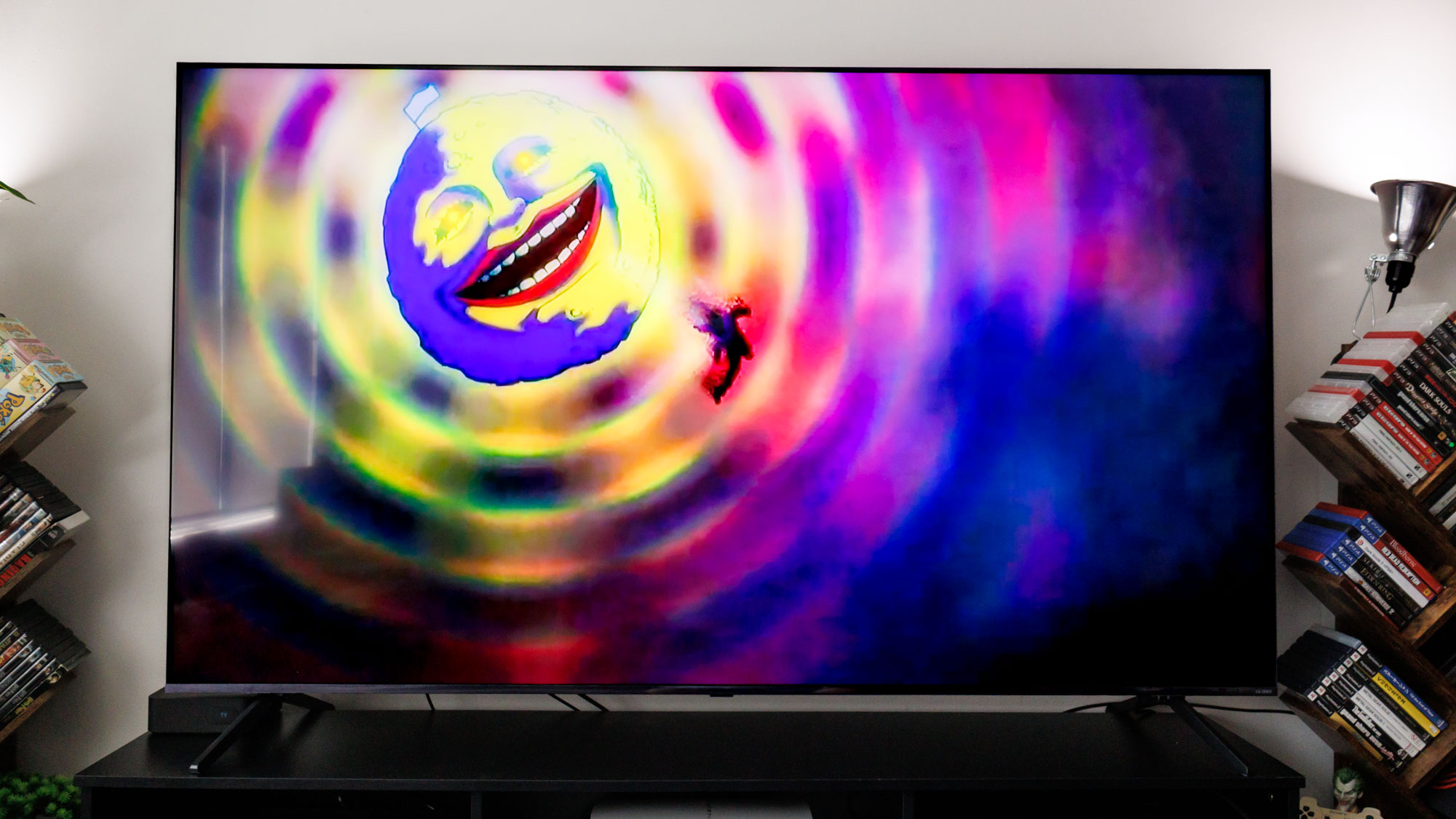
Another highlight is its color accuracy. “Super Mario Bros. Movie” really popped on this screen, thanks to its low Delta-E of 1.5, which measures color accuracy. While it might miss the mark ever so slightly when it comes to specific color gamuts, particularly in both standard and HDR content, these will largely be imperceptible to most eyes.
It’s more in the HDR realm where I see the QNED92 falling flat. Specifically, specular highlights take a big hit on this TV, largely due to its limited brightness output. Jumping back to "Interstellar," you can see this take effect on the planet that’s full of white clouds of ice, with the QNED92 struggling to hit those vibrant white details in this regard.
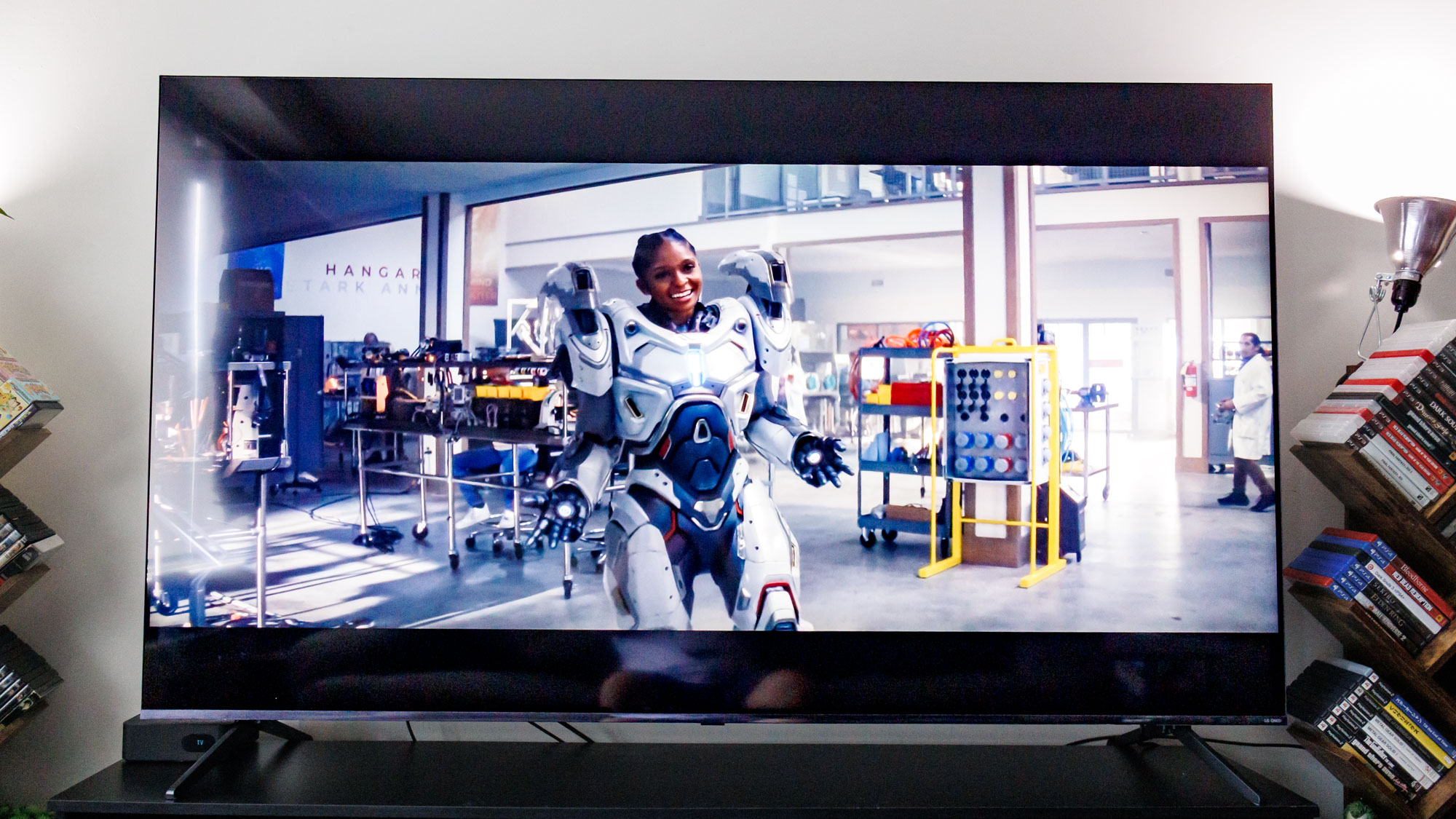
You’ll also find that it can't match up to its C5 OLED counterpart when it comes to upscaling chops. I tried watching some content in lower resolutions, like “Tenet” and “The Fighter” in base Blu-ray and noticed a lot of noise and limited detail.
How we test TVs
We follow a standard testing protocol for every TV we review at Tom’s Guide. Our benchmarks include a series of technical and subject tests designed to rate the set’s performance.
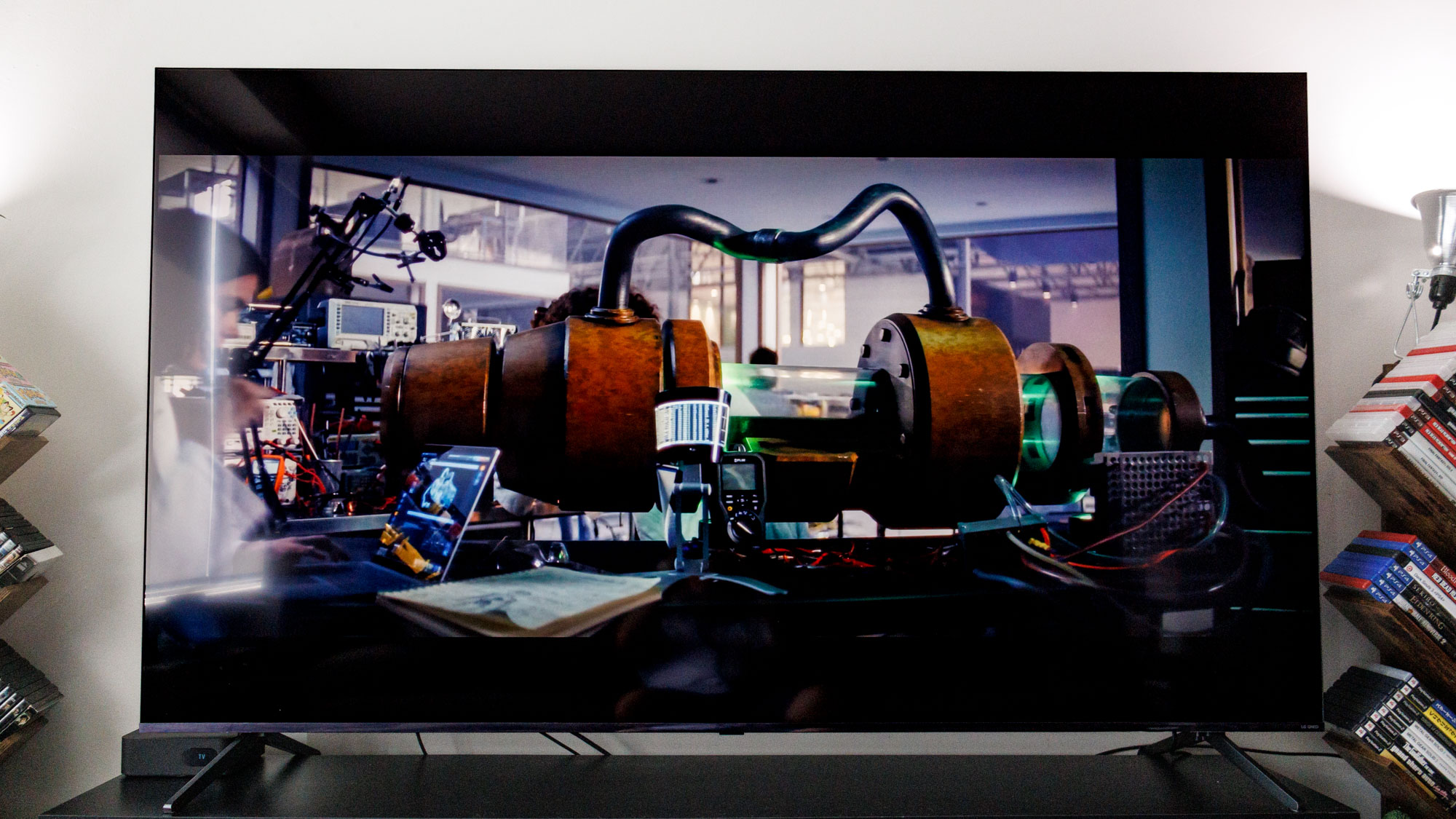
For our technical tests, we use a Jeti spectraval 1501-HiRes spectroradiometer, a Klein K10-A colorimeter, a Murideo 8K-SIX-G Metal pattern generator, and Portrait Displays’ Calman TV-calibration software to take measurements. We also use a Leo Bodnar 4K Input Lag Tester for determining the TV’s gaming prowess.
Subjective tests vary based on the reviewer, but usually feature anecdotes from a diverse selection of movies, TV shows, and other content reflecting the types of things you may actually want to watch on the TV.
LG QNED92 Mini-LED TV review: Test results
Let’s compare the LG QNED92 to similarly-priced Mini-LED TVs, like the TCL QM8K, Sony Bravia 7, and the Samsung QN80F. (Note that the Bravia 7 launched last year, but is still being sold in 2025.)
| Row 0 - Cell 0 | LG QNED92 | Samsung QN80F | TCL QM8K | Sony Bravia 7 | Hisense U8QG |
SDR Brightness (10%, in nits) | 692 | 972 | 230 | 445 | 2,908 |
Delta-E (lower is better) | 1.5 | 2.7 | 2.7 | 1.5 | 2.4 |
Rec. 709 Gamut Coverage | 97.79% | 99.62% | 99.03% | 99.62% | 99.30% |
HDR Brightness (10%, in nits) | 1,199 | 992 | 4,437 | 1,507 | 3,916 |
UHDA-P3 Gamut Coverage | 95.57% | 94.13% | 97.28% | 97.09% | 97.53% |
Rec. 2020 Gamut Coverage | 77.42% | 72.13% | 80.11% | 78.61% | 83.98% |
Input latency (in milliseconds) | 13.3 | 9.8 | 13 | 17.1 | 9.7 |
There’s a lot to unpack when you take a look at the metrics of the LG QNED92, especially when put up against some of its rivals. It might boast some serious vibrancy and color accuracy, but LG falls behind its biggest rivals on brightness and color volume.
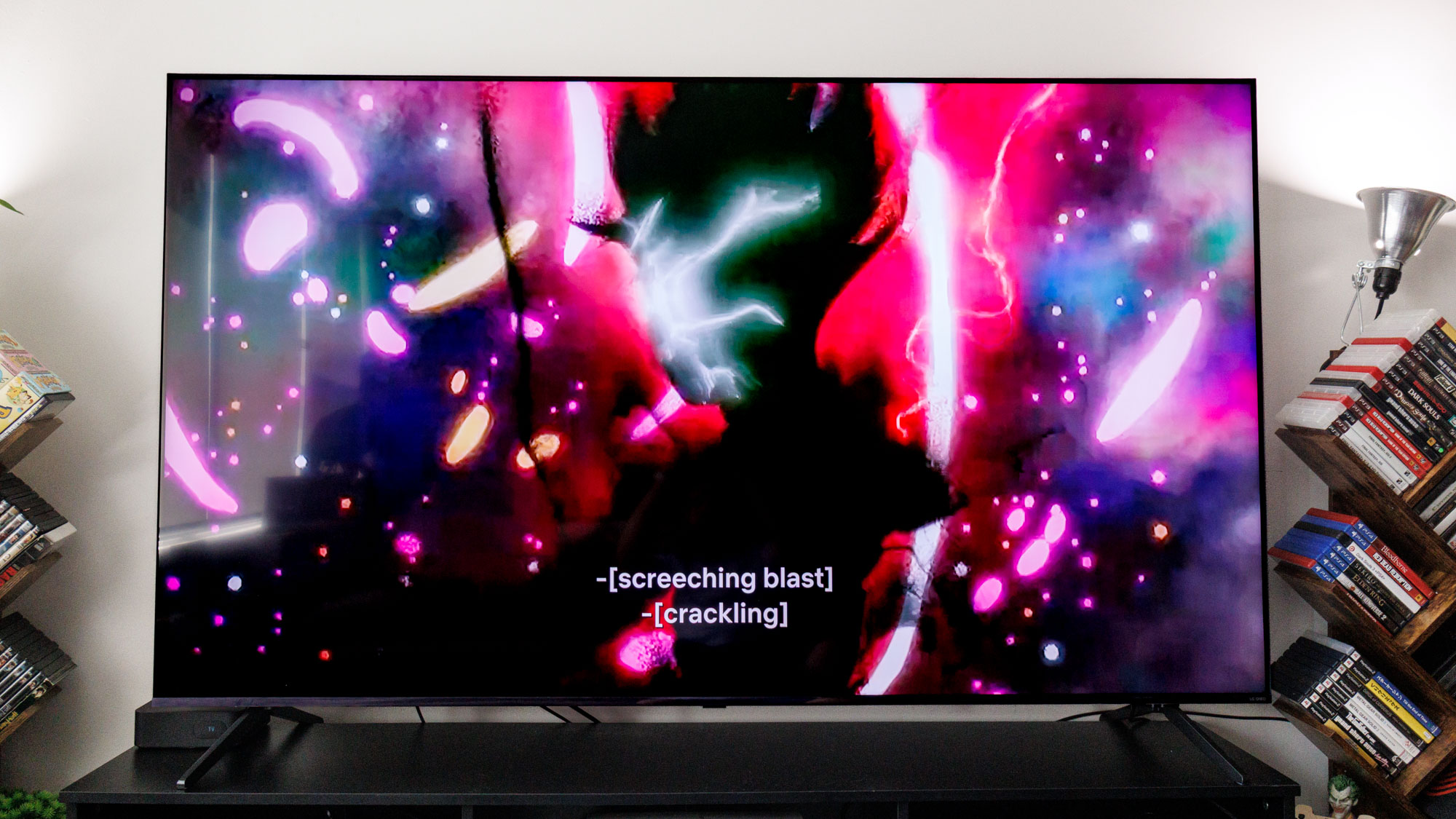
Hisense and TCL top the charts with blazingly-high brightness when displaying HDR content, with the Hisense U8QG exceeding 3,900 nits and the TCL QM8K hitting over 4,400 nits. Meanwhile, the QNED92 maxes out at just under 1,200 nits.
We saw similar results in UHDA-P3 color gamut coverage, which focuses on HDR performance. The QNED92 sits a little over 95%, whereas other LED-LCDs are topping out over 97%, and the same is true for standard content represented in the Rec709 gamut.
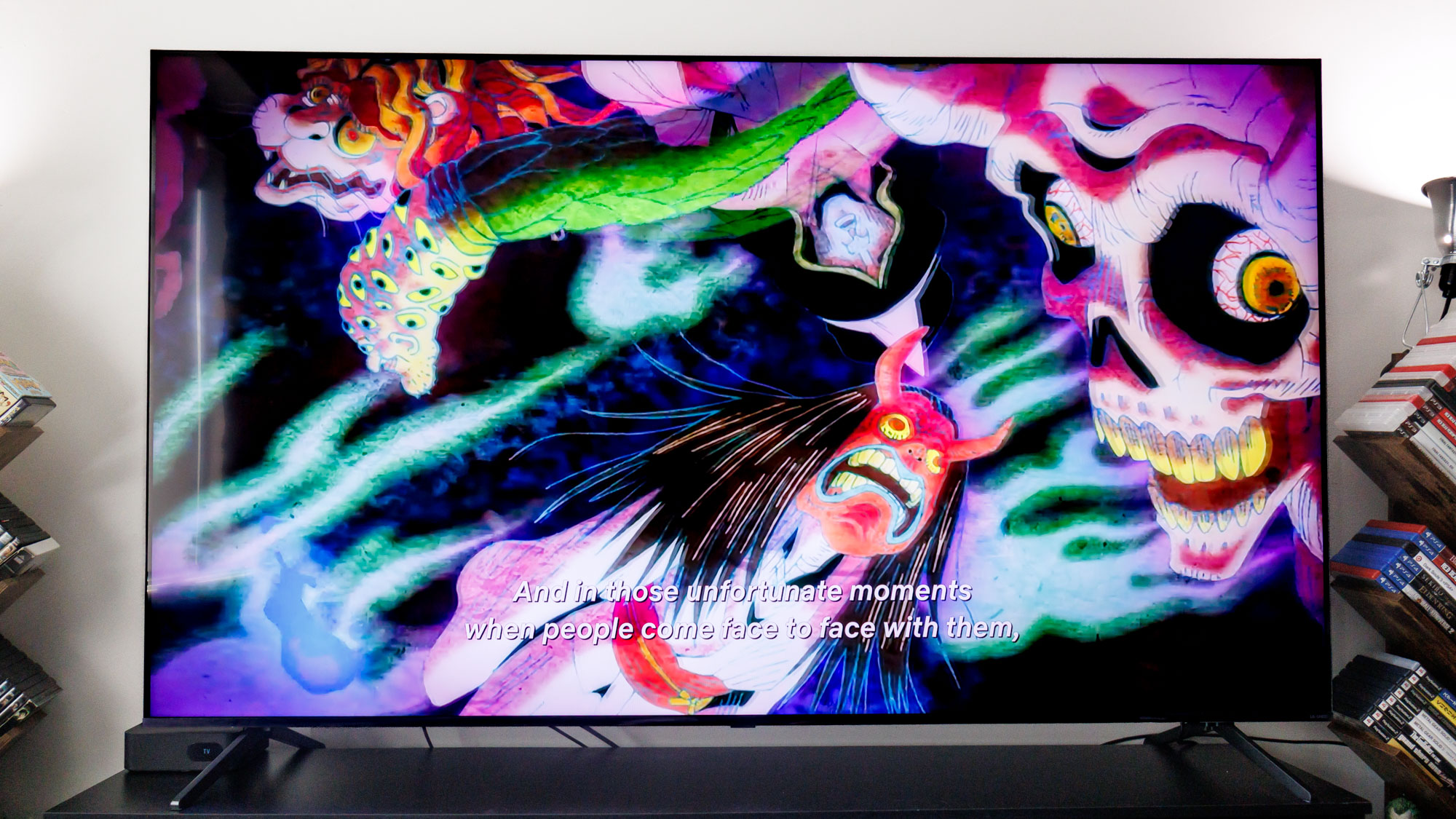
At just 97.79%, the QNED92 is actually the odd man out compared to most other TVs in our metrics, which primarily sit at or above 99%.
What the LG QNED92 does have going for it is a low Delta E of 1.5, mirroring its Sony Bravia 7 counterpart. While that might seem good on paper, anything below a score of 3 is pretty much imperceptible, but it does show that the QNED92 has incredible color accuracy.
LG QNED92 Mini-LED TV review: Gaming
The QNED92 is ready to get your game on thanks to a slew of awesome features, like VRR support up to 144Hz, ALLM and AMD FreeSync Premium. Its native 120Hz refresh rate is adequate enough, especially for more modern consoles like the PS5 and Xbox Series X.
An input latency of 13.3ms might give you pause, and it’s definitely something you might want to consider if you’re playing more fast-paced FPS games or online experiences that require precision timing, but it’s fine for the average gamer. We tend to like the input latency under 10ms, but anything under 16ms works just as well.
The big feature that sets the QNED92 apart from other TVs is the LG Gaming Portal, which plays host to some of the best cloud gaming services, namely Xbox Game Pass and Nvidia GeForce Now. While these won’t exactly replace your gaming hardware, they’re nice to have in the event that a game isn’t available on your platform of choice.
I played a lot of different games on the LG QNED92 and all looked stunning, but none more so than Death Stranding 2. While it does look stellar when it comes to more color-bound aspects, like hair and skin tones, the game did get a bit wonky with HDR, particularly in more sun-drenched scenarios.
LG’s game optimizer is a great resource, though, as you can tailor the experience to suit your liking.
LG QNED92 Mini-LED TV review: Audio
Where the LG QNED92 falls flat, like most TVs, is in its audio performance. It’s not terrible, but it’s also not great — rather middling. This is largely due to its 40W 2.2-channel speaker that pales in comparison to the 65-inch Hisense U8QG, which has a 72W output on a 4.1.2-channel system. Without more power, the QNED92 doesn’t hold much weight in its soundstage.
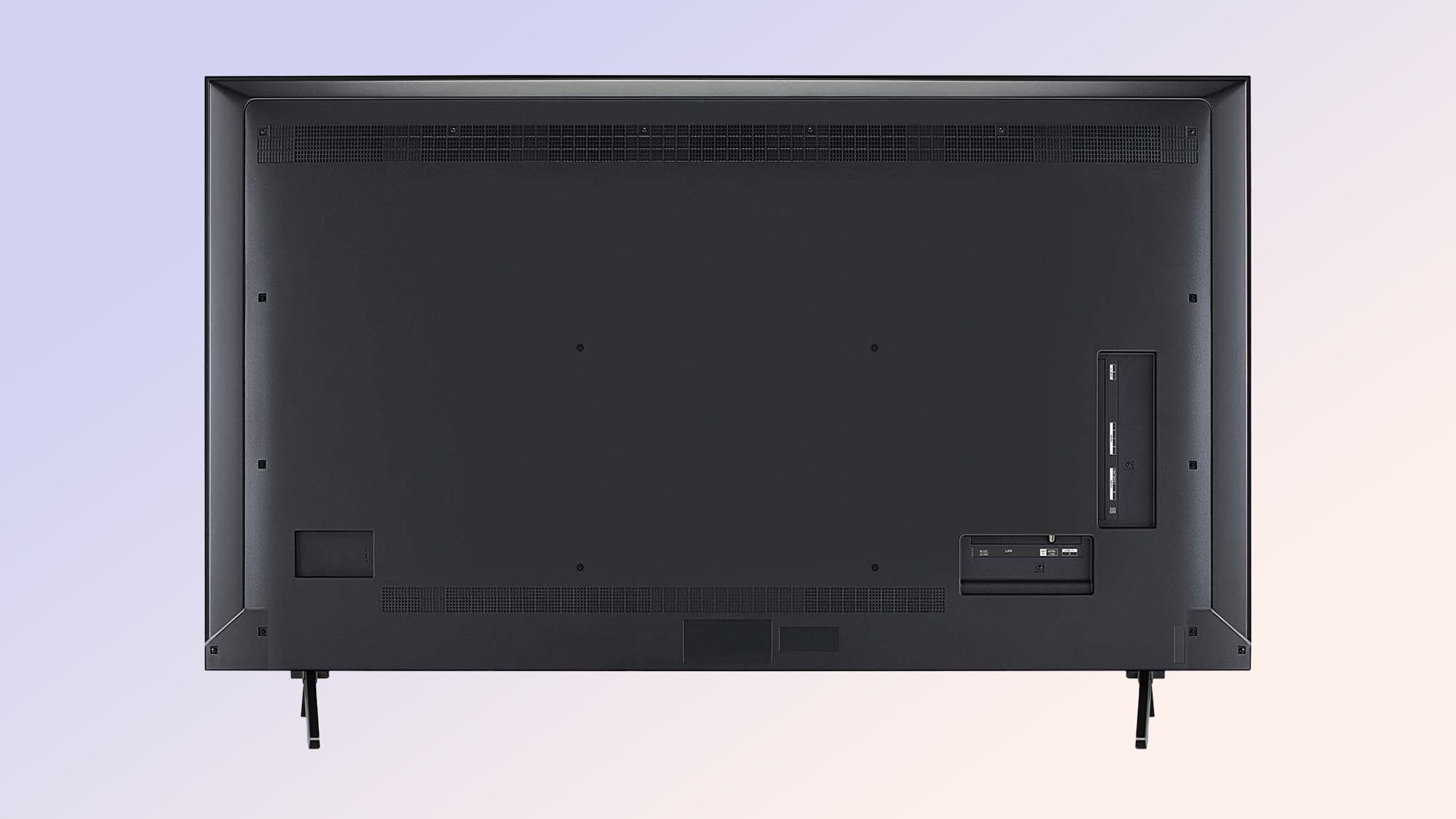
Of course, you could opt into getting one of the best soundbars for improved audio performance, plus it does help that this Mini-LED TV has a virtual Dolby Atmos 9.1.2 up-mix if you want to play with that.
Some additional AI features, like Clear Voice Pro, also help to give some scenes better clarity, but I try to avoid these for fear it will ruin the director’s intent for the film or show.
LG QNED92 Mini-LED TV review: Interface and apps
The QNED92 is built on LG’s webOS interface, which comes with all of the best streaming services baked into it. It’s a well-rounded system, if only held back by its use of in-your-face ads that might only multiply in the future.
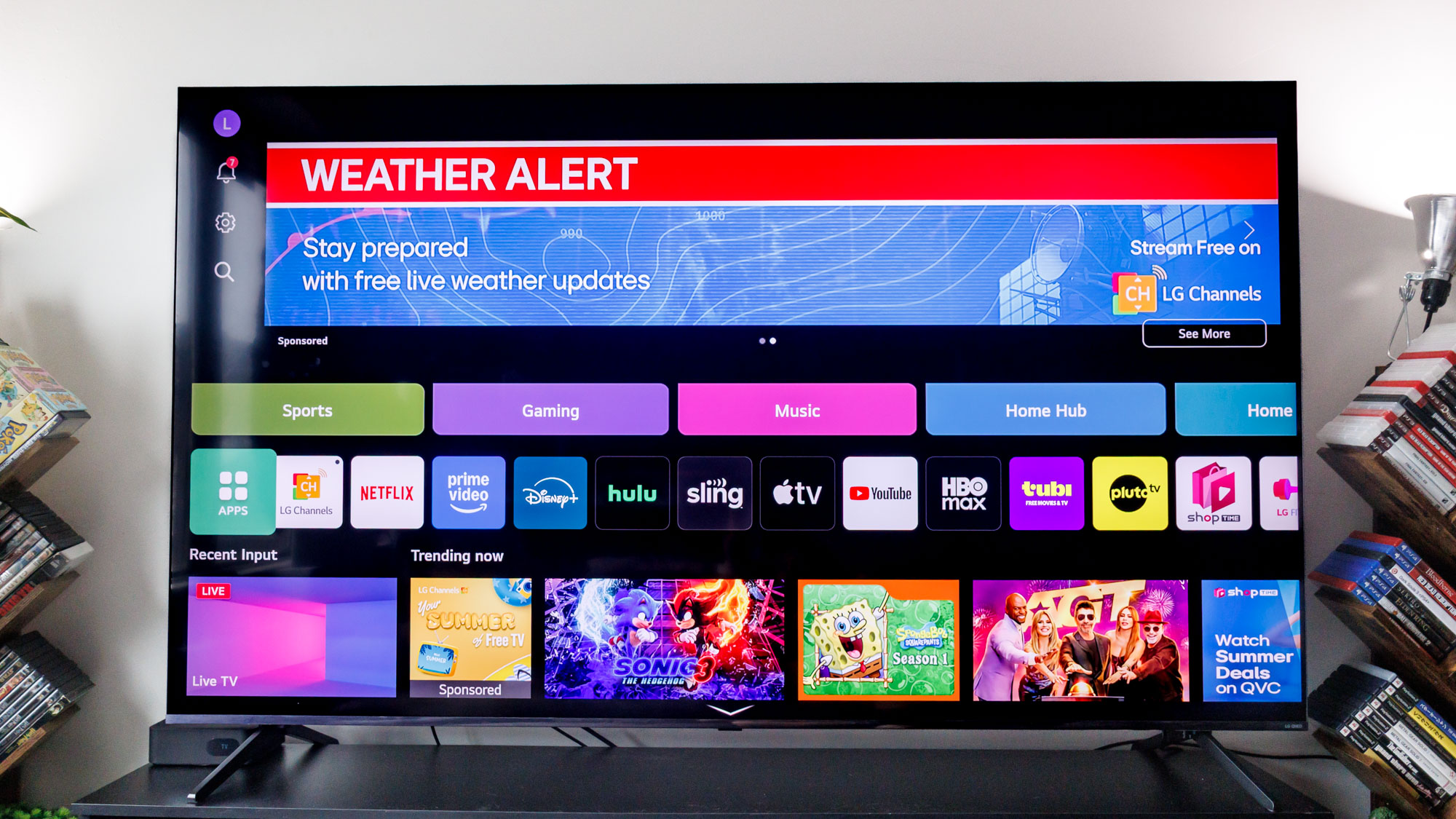
For now, though, it’s stacked with everything you would need in a TV interface, plus tons of free channels to enjoy. As already mentioned, you also have access to a variety of different game streaming platforms, which are only available on LG’s webOS and Samsung’s Tizen OS interfaces.
Through webOS, you can also connect smart home devices using LG’s Google Home integration, which is a nice touch. This might really only matter for users with doorbells or cameras, but having an extra smart home hub built into your entertainment system is a nice get.
LG QNED92 Mini-LED TV review: Remote
One of the biggest pitfalls on previous LG TVs was the remote, which is why I’m excited to say it’s been redesigned with some excellent changes. It’s a lot less bulky and heavy, slimmed down just a bit so it fits better in your palm. It still uses the annoying magic remote feature, but at least you can shut that off pretty easily in the settings.
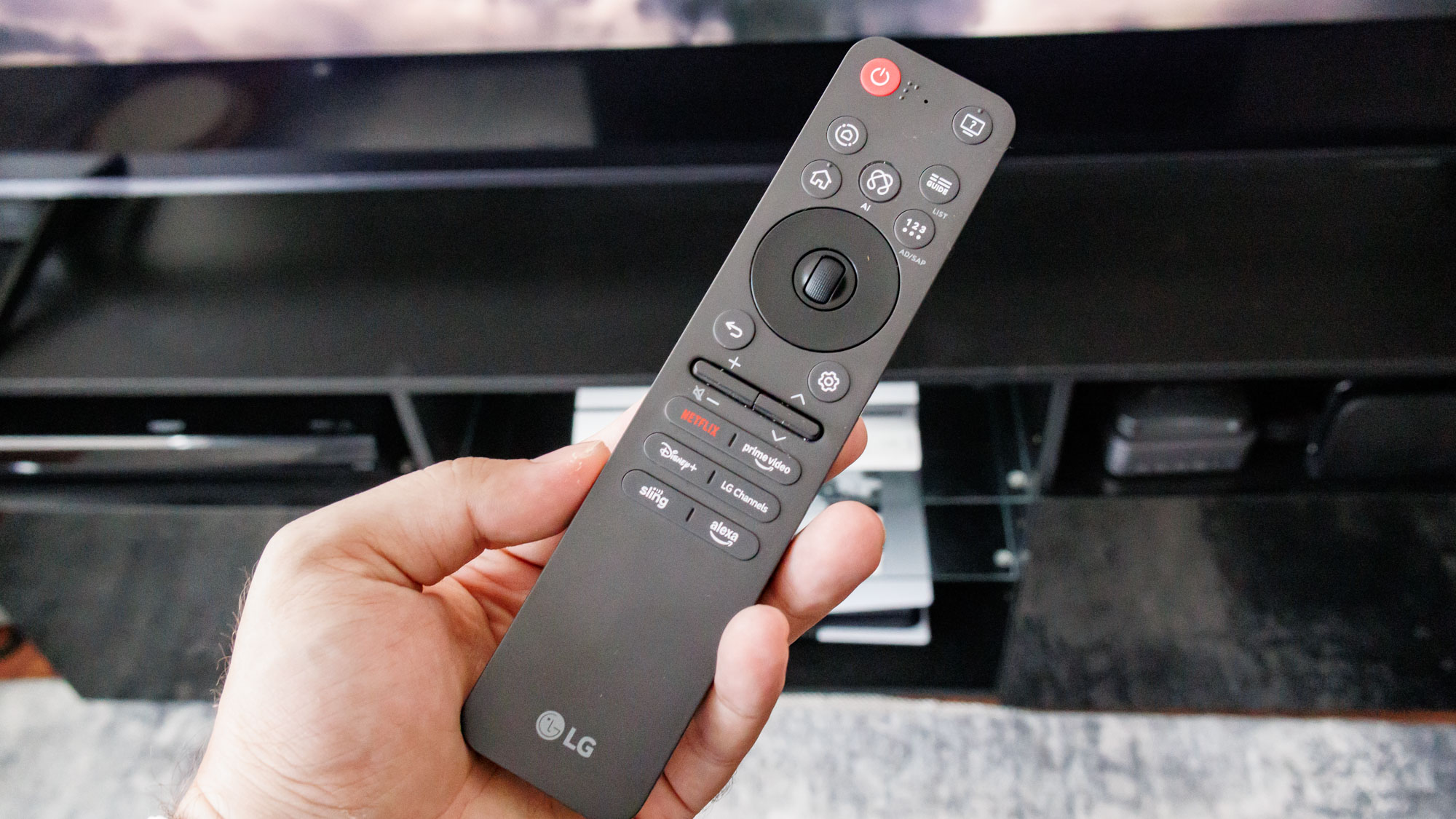
Despite my praise for the design change, I do have one major gripe: Input selection on the new remote is dedicated to LG’s Home Hub button, which isn’t readily known and might take a while to figure out. Using this button also takes a minute to populate on-screen, which is slightly frustrating but mileage may vary in this regard.
LG QNED92 Mini-LED TV review: Verdict
I had a great time testing the LG QNED92. It’s built on a well-rounded interface with tons of control for all things gaming and entertainment, but I can’t deny it is held back by some middling performance metrics.
When you put the LG QNED92 up against some of its biggest contenders, it doesn’t deliver in the luminance department. It might have vibrant colors and tons of gaming features to enjoy, but its minimal brightness in both standard and HDR holds it back — especially when you’re paying $1,699 for its 65-inch model.
Overall, it’s tough to give a full recommendation to the QNED92 when displays like the Hisense U8QG and TCL QM8K are spitting out nearly 4,000 nits in HDR content. Add to that the fact that the QNED92 is still without an ATSC 3.0 tuner, which comes readily available on the Hisense U8QG, and that’s just $997 for its 65-inch model (at the time of writing).
I really enjoyed my time with the LG QNED92, but there are simply better Mini-LED TVs at much cheaper prices. Its performance issues coupled with its high asking price makes the QNED92 hard to recommend over rival Mini-LED TVs, like the Hisense U8QG and TCL QM8K, much less the LG C5 OLED that can be had for just $100 more.

Ryan Epps is a Staff Writer under the TV/AV section at Tom's Guide focusing on TVs and projectors. When not researching PHOLEDs and writing about the next major innovation in the projector space, he's consuming random anime from the 90's, playing Dark Souls 3 again, or reading yet another Haruki Murakami novel.
You must confirm your public display name before commenting
Please logout and then login again, you will then be prompted to enter your display name.
